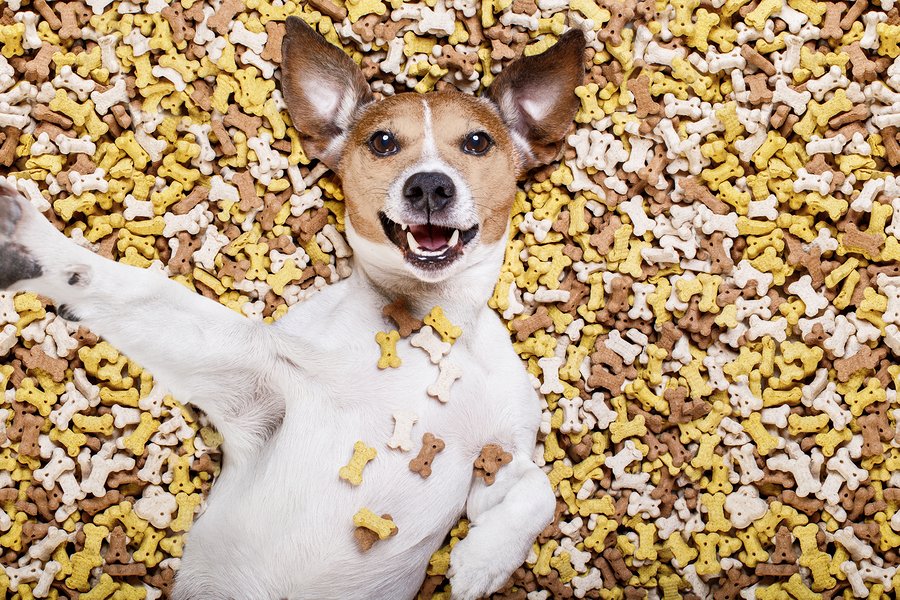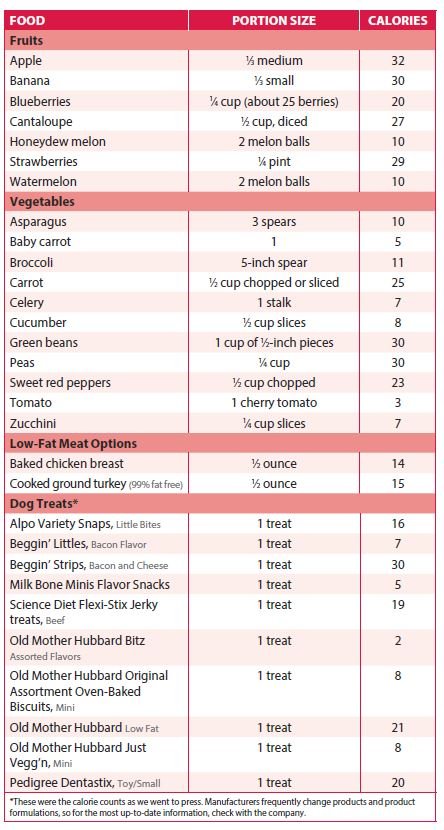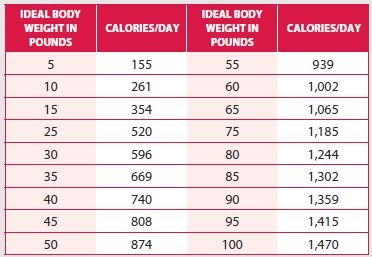
The Head of the Tufts Obesity Clinic for animals, board-certified veterinary nutritionist Deborah Linder, DVM, points out that while people often say they don’t mind a fat dog because it just means there’s more of their pet to love, that leaves less time to love her. A landmark study that followed dogs for more than a decade found that those who were just 10 to 20 percent overweight — not even obese — lived, on average, almost two years less than their svelte counterparts.
Excess weight on dogs doesn’t just shorten their lives, the doctor says. It cuts into their quality of life, both physically and emotionally. Overweight dogs are prone to the same ills as overweight people — osteoarthritis, diabetes, and all-around lack of get-up-and-go. Their mindset, too, is significantly impacted adversely, as evidenced by a study of 50 obese dogs ranging from golden retrievers to Lhasa apsos published in The Veterinary Journal. Those dogs in the study who failed to complete a prescribed weight-loss program had lower vitality and higher emotional disturbance scores than those who successfully lost weight, as rated by their owners. The obese dogs who did manage to complete the weight-loss program enjoyed increased vitality scores and decreased scores for both emotional disturbance and pain, which can affect overall mood and outlook. The greater the weight loss (and body fat loss), the bigger the change in vitality.
How to keep your dog trim, or at least trimmer? One way is to feed lower-calorie treats. Treats should make up only 10 percent of a dog’s calories. That’s because they are not nutritionally balanced and also because too many calories in the form of food outside of meals can really pack on the pounds. When you consider that a single large Greenie has 140 calories — or almost 14 percent of a 60-pound dog’s calorie needs in just one treat (see box on opposite page for more info on calorie needs) — it’s easy to see how people can overdo it.
It’s also easy to understand how feeding too many treats happens. The beseeching eyes, the forlornness, the constant nagging, and yes, the overall adorableness are hard not to give into. But what your dog really hungers for, more than the food itself, is interaction with you. Dogs are bored; they don’t like to sit around while we scroll through pages on our cell phones. If you picked up the leash to take the dog out or tossed a toy around, your pet would probably soon forget she was ever asking for food.
Still, you don’t want to forego treats completely. To at least some degree, they’re currency for your bond with your pet. Never allowing your dog a treat would be like never allowing your child a cookie. That wouldn’t win you “parent of the year” award.
So how can you make treats a regular part of your dog’s day without negatively impacting her waistline? You can always take a portion of your dog’s kibble and put it into a special treat jar on the counter. Even better, put portions of the kibble into a fun food dispenser that is a game for your dog to get the treat. If you want to feed actual treat foods, the following chart of healthful snacks — from the produce bin, the meat counter, and the dog food aisle — will allow you to give into your dog without upending her weight-management plan. Many are listed by Dr. Linder on the Petfoodology tab of the Tufts veterinary school’s Clinical Nutrition Service website (www.vetnutrition.com), which is run by her and her board-certified colleagues.


Yes, But What’s 10 Percent of His Total Calories?
It’s good to know that treats should make up no more than 10 percent of a dog’s daily calories, but unless you know how many calories a day your dog should be eating, the 10-percent rule does you no good. What’s the answer?
Well, for dogs whose ideal weight is between 5 and 55 pounds, there’s a formula that will give you a reasonable estimate (with no calories added in to account for any physical activity), but it requires help from your veterinarian. The formula goes as follows:
30 x ideal weight (in kilograms) + 70.
Talk to your veterinarian about your dog’s ideal weight. He or she should be able to tell you.
Let’s say you learn the ideal weight in pounds. To convert to kilograms, just divide the number by 2.2. For example, if your dog’s ideal weight is 44 pounds, that’s 20 kilograms. Multiply 20 by 30 for a total of 600 and then add 70, and you get a daily requirement of 670 — plus some calories for walking and other physical activities. It’s not etched in stone. If your dog is quite active, he’s going to need considerably more. If he lives his life as a throw rug stretched out here and there, he might even need somewhat fewer.
Don’t feel like doing the math? Here’s a chart, which also gives general calorie requirements, including for dogs who weigh more than 55 pounds. It does add in some calories to account for at least a modicum of physical activity.





